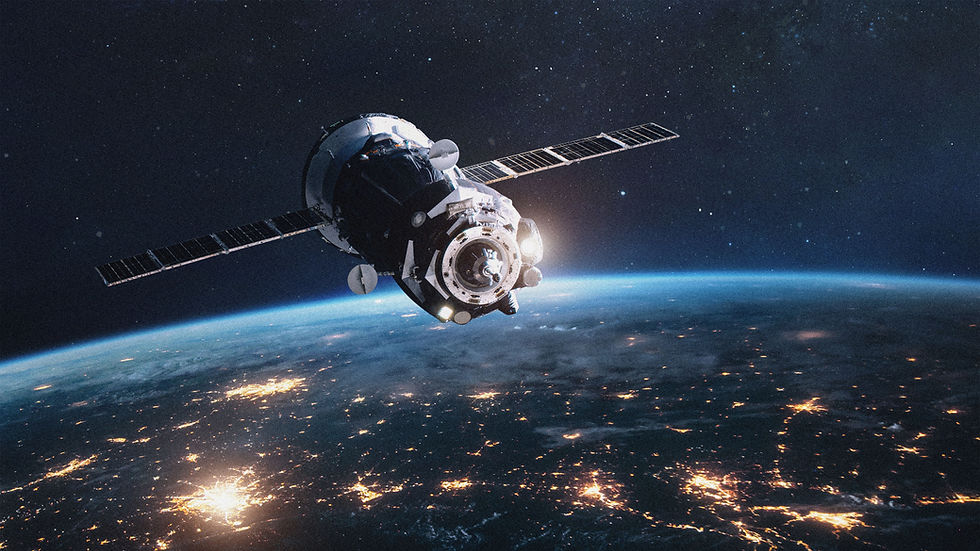CubeSats in Education: A Student PI Perspective on CapSat.-- Samer Elhoushy (9th grade)
- Shawna Christenson
- Jul 1, 2020
- 3 min read
The CapSat-1 CubeSat mission proposal was submitted to NASA’s CubeSat Launch Initiative (CSLI) program in November of 2018. This mission was submitted on behalf of an extracurricular program known as The Wolverine CubeSat Development Team (WCDT), located within the Weiss School, which is a K-8th gifted school in Palm Beach Gardens, Florida. The WCDT program had launched another CubeSat prior, known as the WeissSat-1, and The Weiss School was and still is the only middle school program nationwide to have successfully launched a CubeSat mission with NASA’s CubeSat Launch Initiative. The CapSat-1 was submitted along with four other CubeSat proposals, and each proposal that was submitted utilized the experience each student gained prior when developing the WeissSat-1 mission. Students from The Weiss School have presented at NASA headquarters, multiple International Astronautical Congresses (IAC), the International SmallSat Conference, and many others local, statewide, and national conferences. The Weiss School was specifically selected to present in these conferences for its experience in the field of aerospace engineering, and its novelty of allowing younger middle school students to develop their own individual satellite missions.
The CapSat-1 is a technology demonstration mission that was selected on March 14th, 2019 through NASA’s tenth annual round of their CSLI program. This mission proposal is designed to validate a capacitor-based electrical power system in a 1U CubeSat. Currently, all small CubeSats use lithium ion polymer batteries as their primary source of power. Capacitors have been proven to be safer, more cost/volume-efficient, and more temperature-durable than lithium ion polymer batteries. This mission would validate their power/voltage efficiency and compare that to the status quo of the electrical power system (EPS) in CubeSats today. The CapSat-1 is planned to be nearly fully solar powered, with a secondary supply power of a lithium ion polymer battery in case the capacitors were to fail under the supply of the CapSat-1’s solar panels. This CubeSat will launch as a 1U, and its launch date is expected to commence within early-to-mid 2021. It has been the job of the mission’s Co-Investigator to develop the CapSat-1 and ensure that it will undergo all necessary requirements for launch.
Though its secondary mission is for technology demonstration, the CapSat-1’s primary mission is education. The CapSat-1 mission, being developed by middle school students, is giving these young engineers the opportunity to have hands-on experiential learning, which entails learning how to develop, build, test, and fly a satellite mission. The mission was initially submitted under the leadership of a 7th-grade middle school student and is now being developed by an 8th-grade Co-Investigator. Through this process, students have been networking and will network with both industries and major universities.
On a personal level, being the initial Co-Investigator of the CapSat-1 mission (even before its proposal submission) impacted my learning and knowledge base significantly at the onset. The passion that I had already gained in engineering through the WCDT program had reached much more expanded levels through the mission itself, as it was centered around concepts that are based from electrical engineering. Being the leader of a satellite proposal in it of itself also expanded my knowledge base significantly with regards to teamwork and leadership development, which has given me the basis to allow me to communicate my thoughts and information on the CapSat-1 mission. This, therefore, gave me the ability to expand and develop the mission far past what it was at its inception, and the ability to communicate and educate others on the mission in the form of large-scale mission reviews, conference presentations, and a (humbling) presentation at the White House’s Office of Science and Technology Policy has set it up for success at the highest degree possible.
Overall, students at a young age can be inspired by the real work of aerospace by designing, building, and launching real space craft. There is no better way to inspire the STEM workforce of tomorrow than to reach for the sky and beyond--literally-- while students are engaged and motivated. Teachers are encouraged to learn about opportunities such as the CSLI and to join professional organizations where their students may partake in a successful blending of industry and academia.




Comments